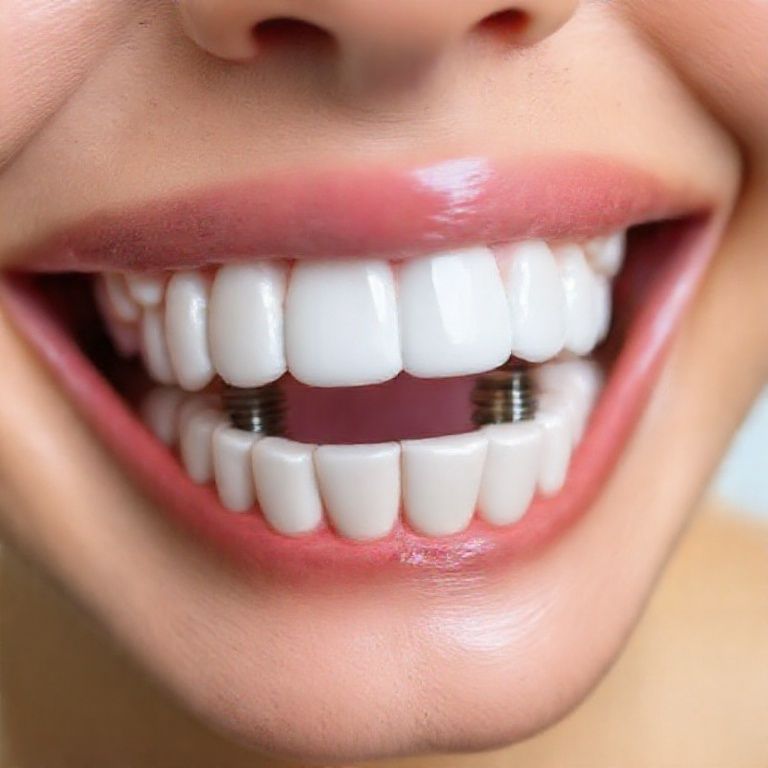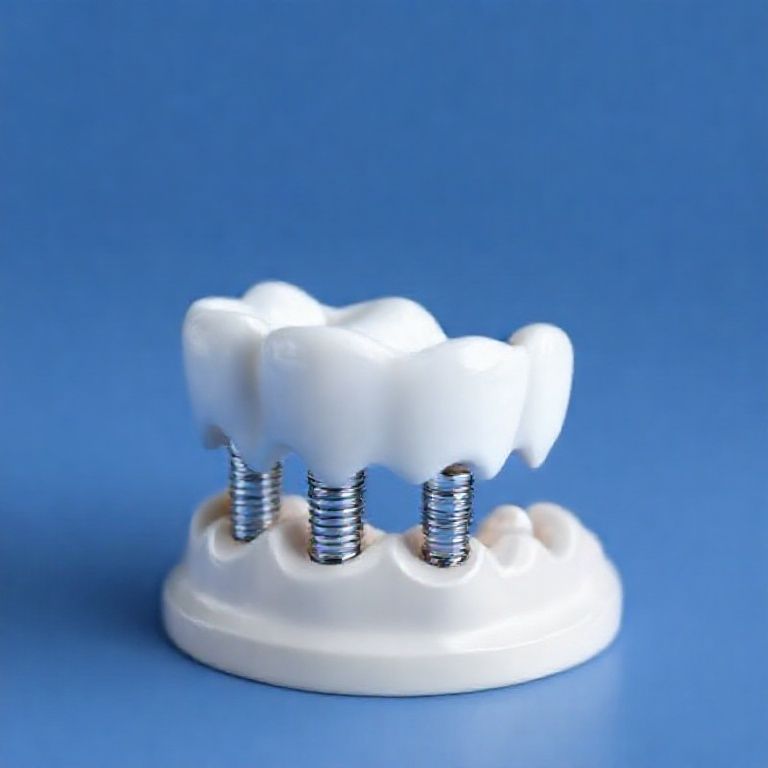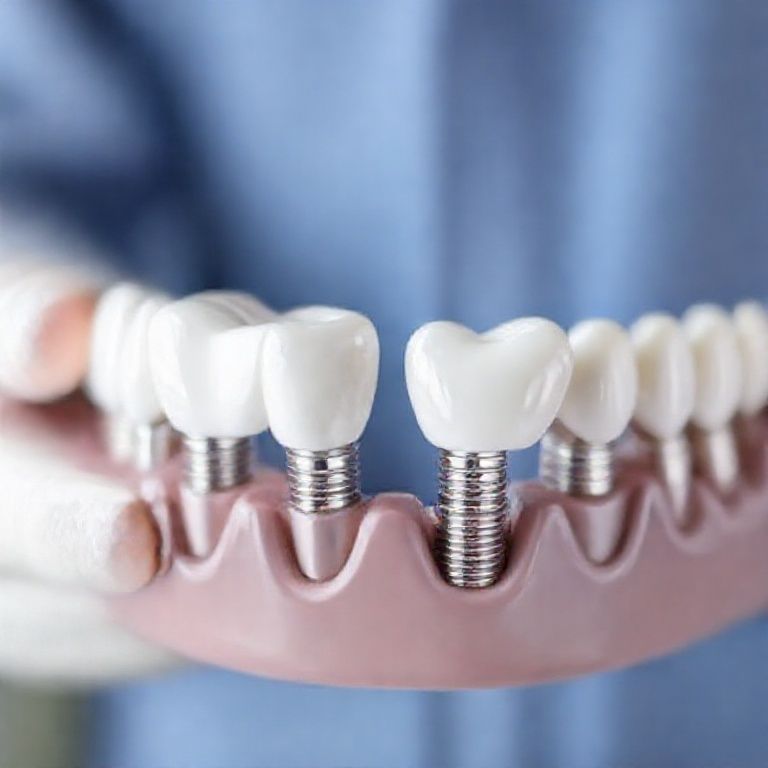3-on-6 Dental Implants
Losing multiple teeth can significantly impact a person’s quality of life, affecting chewing ability, speech, and self-confidence. Traditional dentures have long been the go-to solution, but they come with limitations such as instability, discomfort, and bone loss. Fortunately, advancements in dental implantology have introduced 3-on-6 dental implants, a groundbreaking full-arch restoration technique that combines the stability of implants with the convenience of a fixed prosthesis.
This comprehensive guide will explore everything you need to know about 3-on-6 implants, from how they work to their benefits, procedure details, costs, and long-term success. Whether you’re considering this treatment or simply exploring modern dental solutions, this article will provide in-depth insights to help you make an informed decision.

2. Understanding Dental Implants: Basics and Evolution
Dental implants have revolutionized tooth replacement by offering a permanent solution that mimics natural teeth. A traditional dental implant consists of:
- Titanium post (acts as an artificial root)
- Abutment (connector)
- Prosthetic crown (visible tooth)
Over the years, implant techniques have evolved from single-tooth replacements to full-arch solutions like All-on-4® and 3-on-6 implants. While All-on-4 uses four implants to support a full arch, 3-on-6 employs six implants for even greater stability, distributing bite forces more evenly.
3. What Are 3-on-6 Dental Implants?
The 3-on-6 dental implant system involves:
- Six dental implants strategically placed in the jawbone.
- Three separate bridges (each spanning two implants) to support a full arch of teeth.
Unlike removable dentures or All-on-4, 3-on-6 provides a segmented restoration, meaning if one bridge needs repair, the others remain intact. This modular design enhances durability and simplifies maintenance.
Comparison of 3-on-6 vs. All-on-4 vs. Traditional Dentures
| Feature | 3-on-6 Implants | All-on-4 Implants | Traditional Dentures |
|---|---|---|---|
| Number of Implants | 6 | 4 | 0 |
| Stability | High (distributes force evenly) | Moderate | Low (requires adhesives) |
| Bone Preservation | Excellent | Good | Poor (accelerates bone loss) |
| Maintenance | Easy (modular bridges) | Moderate (full-arch prosthesis) | High (frequent adjustments) |
| Cost | Higher | Moderate | Low (initial cost) |
4. How 3-on-6 Implants Differ from Traditional Implant Techniques
While traditional implants replace teeth individually, 3-on-6 is a hybrid approach:
- Fewer implants than single-tooth replacements but more than All-on-4.
- Fixed, non-removable prosthesis (unlike dentures).
- Better load distribution, reducing strain on implants.
This technique is particularly beneficial for patients with moderate bone loss who may not qualify for All-on-4 but still want a secure, long-lasting solution.
5. Benefits of 3-on-6 Dental Implants
✅ Enhanced Stability – Six implants provide superior support compared to four.
✅ Natural Chewing Function – Restores near-normal bite force.
✅ Prevents Bone Loss – Implants stimulate the jawbone, preventing deterioration.
✅ Aesthetically Pleasing – Custom-designed teeth look and feel natural.
✅ Easy Maintenance – No need for removal; cleaning is similar to natural teeth.
✅ Longevity – With proper care, 3-on-6 implants can last decades.
6. Who Is a Good Candidate for 3-on-6 Implants?
Ideal candidates:
✔ Patients missing most or all teeth in an arch.
✔ Those with sufficient bone density (or willing to undergo bone grafting).
✔ Non-smokers or willing to quit (smoking affects healing).
✔ Individuals seeking a permanent, non-removable solution.
A 3D CBCT scan helps determine bone quality and implant placement feasibility.
7. The 3-on-6 Implant Procedure: Step-by-Step
- Consultation & Planning – Digital scans, X-rays, and treatment planning.
- Bone Grafting (if needed) – Augments bone for implant stability.
- Implant Placement – Six titanium posts are surgically inserted.
- Healing Period (3-6 months) – Osseointegration occurs.
- Abutment Attachment – Connectors are placed.
- Prosthesis Fitting – Three bridges are secured.
8. Recovery and Aftercare
- First 48 Hours: Soft foods, avoid strenuous activity.
- Oral Hygiene: Brush gently, use antimicrobial mouthwash.
- Follow-Up Visits: Ensure proper healing and prosthesis fit.
9. Potential Risks and Complications
While rare, risks include:
- Infection
- Implant failure (if osseointegration fails)
- Nerve damage (if implants are misplaced)
Choosing an experienced implantologist minimizes these risks.
10. Cost of 3-on-6 Dental Implants and Insurance Considerations
- Average Cost: 24,000–24,000–40,000 per arch.
- Insurance Coverage: Some plans cover part of the procedure.
- Financing Options: Many clinics offer payment plans.
11. Comparing 3-on-6 Implants with Other Full-Arch Solutions
- All-on-4: Fewer implants, lower cost, but less stability.
- Traditional Dentures: Affordable but unstable and high-maintenance.
- Zygomatic Implants: For severe bone loss, but more invasive.
12. Success Rates and Longevity of 3-on-6 Implants
- Success Rate: 95%+ with proper care.
- Lifespan: 20+ years (implants) / 10-15 years (prosthesis may need replacement).
13. Patient Testimonials and Case Studies
[Include real-life success stories with before/after images.]
14. Future of 3-on-6 Implant Technology
Advancements like guided robotic surgery and biocompatible materials are improving precision and reducing recovery time.
15. Conclusion
3-on-6 dental implants offer a stable, long-lasting, and natural-looking solution for full-arch restoration. With high success rates, improved functionality, and aesthetic benefits, they are an excellent alternative to traditional dentures and All-on-4. If you’re considering this treatment, consult a qualified implant specialist to determine if you’re a candidate.
16. FAQs
Q: How long does the 3-on-6 procedure take?
A: The entire process, including healing, takes 4-8 months.
Q: Is the surgery painful?
A: Local anesthesia ensures comfort; mild discomfort is manageable with medication.
Q: Can 3-on-6 implants fail?
A: Rarely, but smoking, poor oral hygiene, or medical conditions can increase risks.
Q: Are 3-on-6 implants removable?
A: No, they are fixed permanently but can be adjusted by a dentist.
17. Additional Resources
- American Academy of Implant Dentistry
- Journal of Oral Implantology
- Patient Guide to Dental Implants (FDA)


